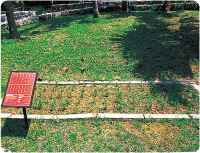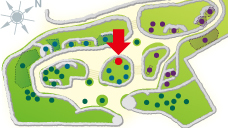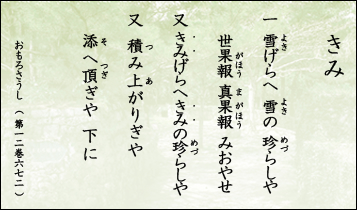Traditional Okinawa Village and Omoro Arboretum
Panicum miliaceum
General description

| Omoro name | Kimi |
|---|---|
| Japanese name | Kibi |
| Family name | Poaceae |
| Okinawan name | Mahjin, Chimi, Chimiawa |

Location within the park

Characteristics
Panicum miliaceum is an annual herb that grows to be about 3.3 feet tall. In the autumn, it grows many flowers at the top of a stem which has prickles, and hangs down when it bears fruit. The fruit, which is larger than Setaria italic, is a spherical shape of about 0.12 inches and is a yellowish color. The Japanese name is said to be a corruption of “Kimi”. Some believe that its place of origin is from East Asia to Central Asia, and closely related species grow naturally in India and Pakistan. Since it is tough against coldness and desiccation and its cultivation period is short, it has been cultivated as a valuable food source from the ancient times. As people migrated to the west, it spread, and according to the records, it was introduced in Europe during the Mesolithic age (8000-4000 B.C.). It is said that it was introduced in Japan from North China via North Korea later than rice and millet.
Utilization
【fruit】 : for eating mixed with rice, confectionery, medicinal use
Best Time To See Calendar

Omorosaushi (672 of Volume 12 Kimi) Kimi

Meaning of the song
How splendid it is to harvest such fine rice
Offer this global happiness and rich harvest to the king
How splendid it is to harvest such fine millet
Offer this global happiness and rich harvest to the king
Collect a bunch and offer it to the king below the Keiseimon gate








